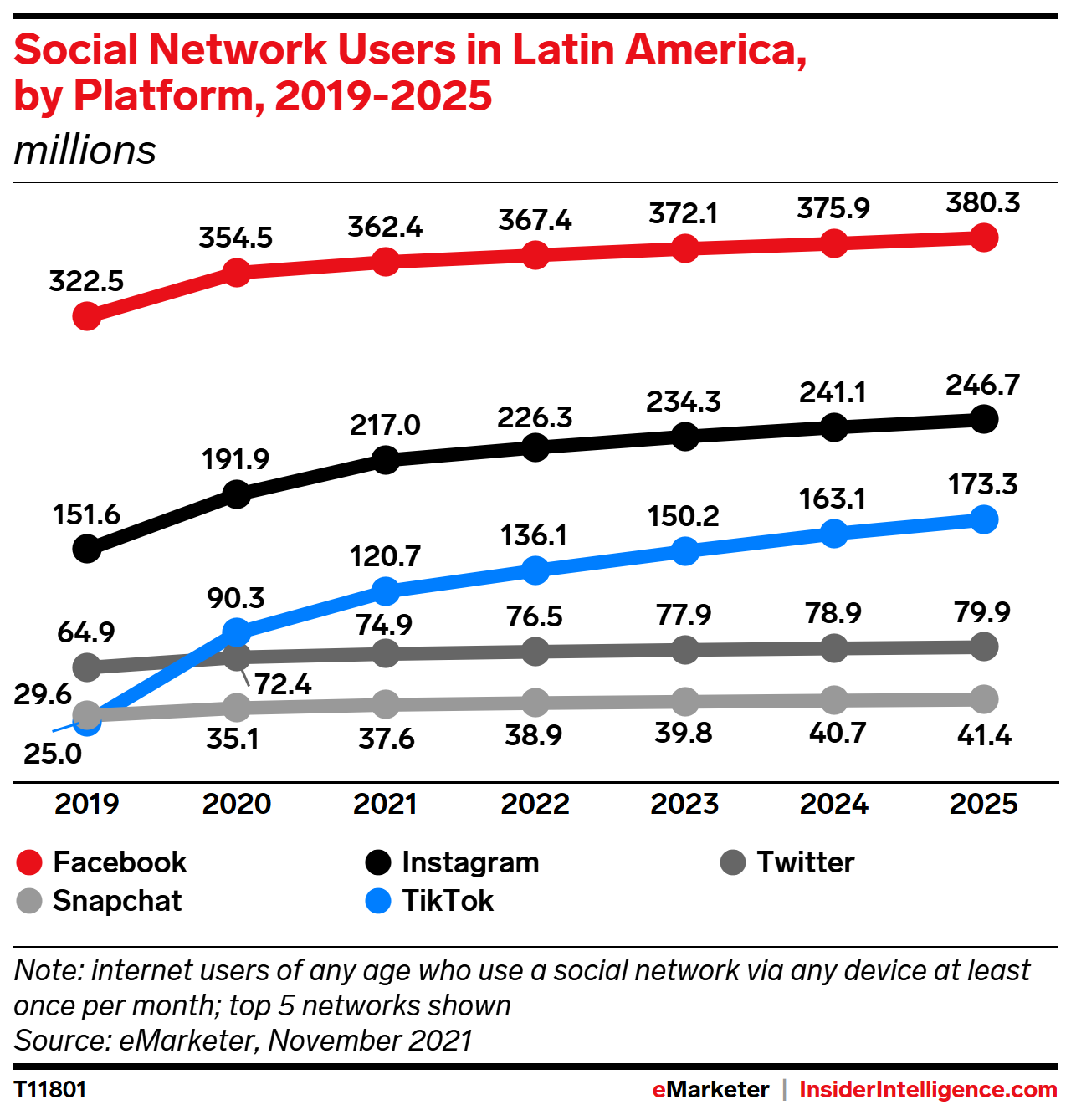Latin America Social Network Users 2022: TikTok Takes Flight as Other Platforms Fight to Win New Users
Executive Summary
People in Latin America love social networks. Social media use in the region is nearly synonymous with internet usage. In 2022, Facebook, Instagram, TikTok, Snapchat, and Twitter will each gain new users, but certain platforms will fare better than others.
3 KEY QUESTIONS THIS REPORT WILL ANSWER
How many people in Latin America use social networks, and which countries are fueling growth?
What are the biggest trends in social platform usage in Latin America?
What do these trends mean for marketers in Latin America?
WHAT’S IN THIS REPORT? Our updated forecast for social network users in Latin America through 2025, with breakouts for Argentina, Brazil, and Mexico. We also discuss key trends at Facebook, Instagram, Snapchat, TikTok, and Twitter.
KEY STAT: TikTok’s growth trajectory in Latin America has been remarkable. As the region’s third-largest social network, TikTok’s Latin America users will be almost double Twitter’s and 3.5 times the size of Snapchat’s by the end of the year.
Key Points
Nearly 9 in 10 internet users in Latin America will use social networks. This year, there will be 392.6 million social network users in the region.
Facebook is the undisputed leader, but growth is slowing. This year’s net addition of 5.0 million new users in the region will be the lowest ever in our forecast.
TikTok’s adoption has exploded. There will be 136.1 million TikTok users in Latin America this year. More than 3 in 10 internet users will be on the platform.
Instagram will benefit from younger users’ Facebook exodus.
Twitter is struggling to grow its user base in the region. Annual growth has decelerated from 2020’s peak, badly trailing TikTok’s double-digit growth rate.
Snapchat’s penetration rate among internet users is much lower than other social networks’.
Because of their high usage, social networks should be fundamental tools for marketers in Latin America.
Click here to read the full report.
